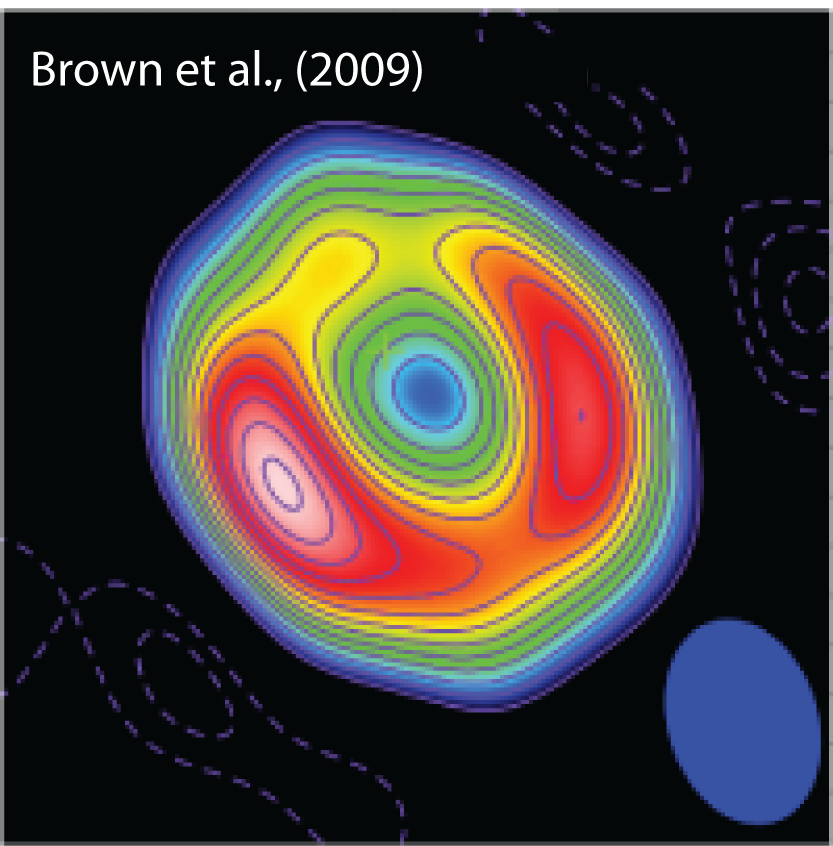Planet formation theory tracks the agglomeration of solid particles in
protoplanetary disks from micron-sized dust to the 1000 km cores of
giant planets. Vaulting this tremendous gulf, spanning some 12 orders
of magnitude, requires multiple growth mechanisms and physical
processes. The theory is hence very broad, complicated, and still
somewhat incomplete.
I have been interested especially in the dynamics of quite small dust
(micron to cm sizes), how dust motions couple to that of the surrounding
gas, and the various aerodynamic instabilities that can
occur. The disordered flows that the latter develop could lead to enhanced
clumping of particles, and coagulation.
On the other hand, I have worked on the formation and evolution of vortices in such disks,
not only because their dynamics is very interesting, but also because
vortices are generally excellent vehicles to collect dust. It is also
possible that recent observations of 'lop-sided'
disks indicate the presence of large vortices (see above). But they are
also subject to myriad instabilities, many of which have not been
fully understood or categorised.
Potential PhD topics include:
*Comprehensive stability theory of general vortex profiles
*Stability of dust-laden vortices
*Simulations of vertically stratified Rossby wave instability. Vortex
evolution in magnetically layered disks.
Recent papers
*Vortices and the saturation of the vertical shear instability
in protoplanetary discs
(link)
*On dust-gas gravitational instabilities in protoplanetary discs
(link)
*On the survival of zombie vortices in protoplanetary discs
(link)
*Vortex cycles at the inner edges of dead zones in protoplanetary disks
(link)
*On linear dust-gas streaming instabilities in protoplanetary discs
(link)
